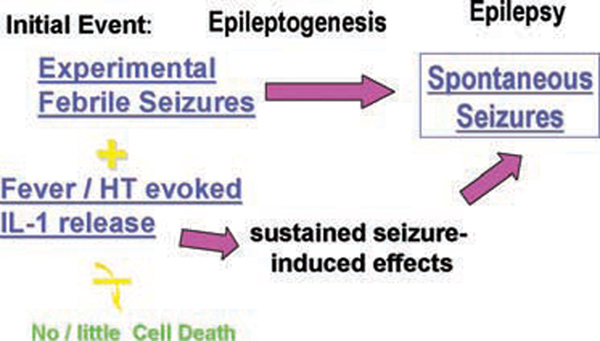FIG. 1.
A schematic representation of a hypothetical scenario for epileptogenesis following prolonged experimental febrile seizures. The initial, inciting “insult” in this case consists of two elements: First, the experimental seizures, that, similar to other early life seizures, provoke transient changes in the expression of several ion channel and receptor genes (top fuchsia arrow). Second, the release of endogenous interleukins, a phenomenon that appears not to occur in chemical-induced seizures provoked prior to postnatal day 14–15 in the rodent. Interleukins, in turn, act via several molecular cascades to influence gene expression (bottom fuchsia arrow). Because interleukin expression and genomic actions appear to be sustained, the alteration in gene expression described above endure, and promote epileptogenesis. Bottom yellow arrow, with a “strikeout” bar, denotes relative absence of neuronal death associated with these processes.

